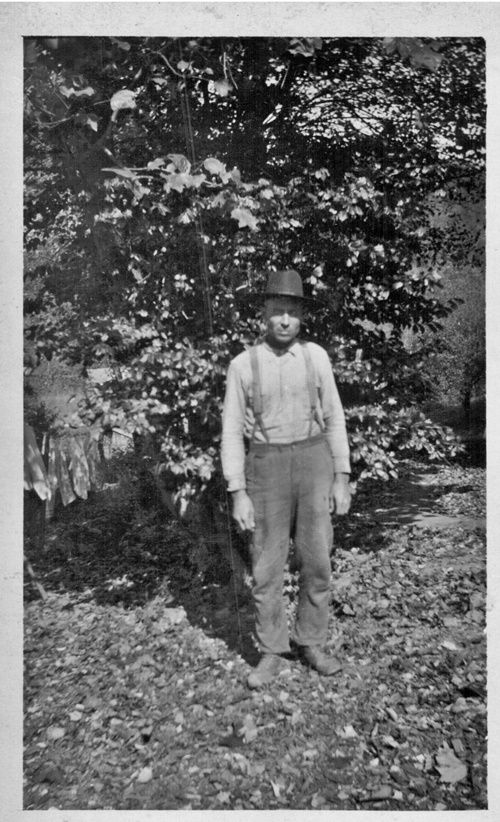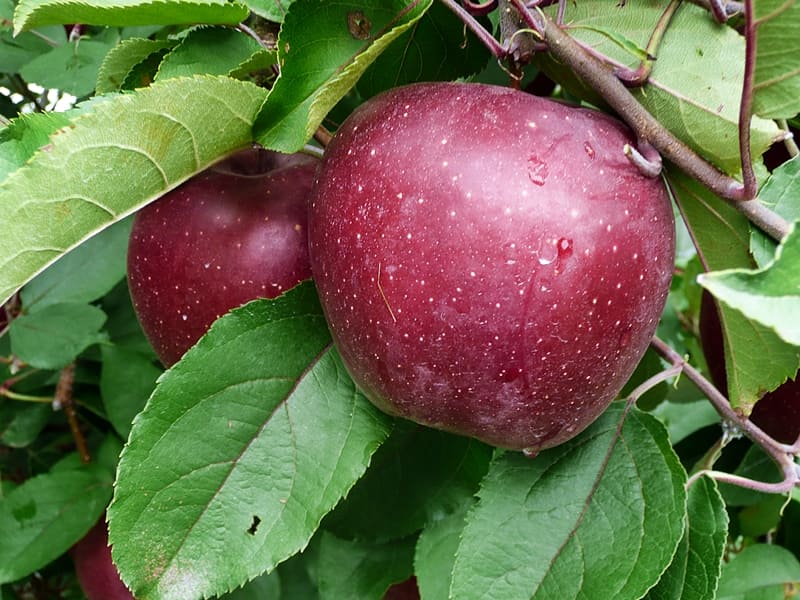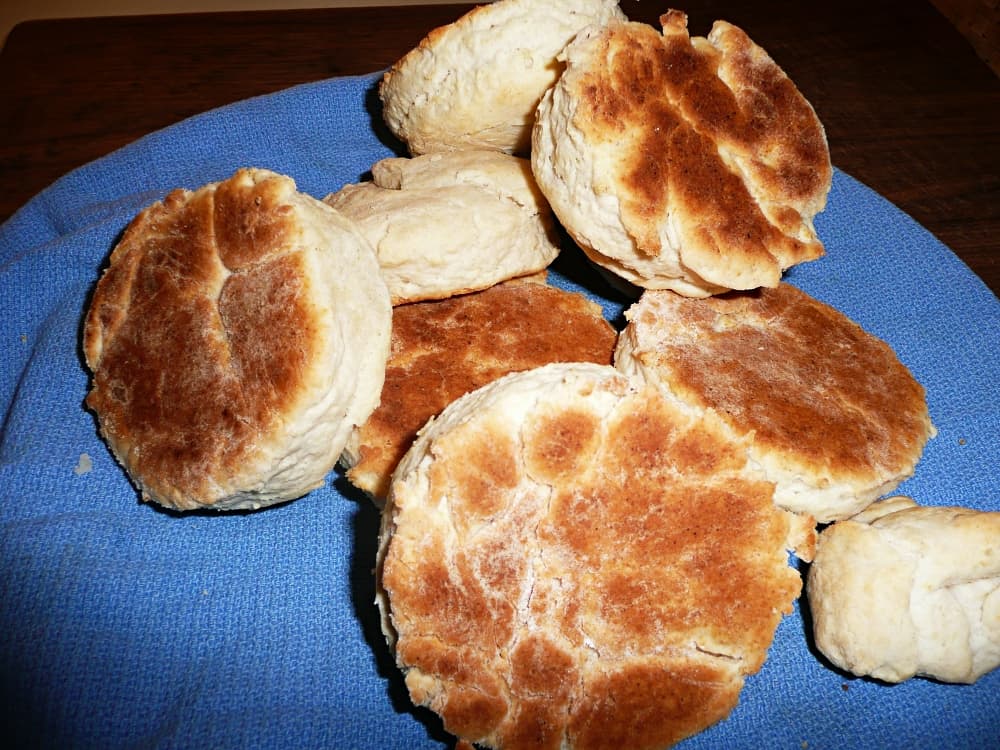AUGUST AIN’T ALL THAT AWFUL
These words are being written just as Dog Days come to an end. If you go strictly by the calendar and when the Dog Star, Sirius, is in the ascendant, then they fall in the period between July 3 and August 11. In the mountain world of my youth though, the term Dog Days was invariably associated with the tail end of July and most if not all of August.
It was a period when gardens were pretty well “made,” when those vegetable crops that had yielded such wonderful abundance for a couple of months began to peter out, and when the weather was flat-out miserable. Fish wouldn’t bit worth a lick, there were parental admonitions about getting “dew pizened” (supposedly a cut on your foot wouldn’t heal if you got it wet in the morning dew, and since every lad worth his salt went barefooted that was a problem), it was so humid being outside in the middle of the day was stifling, and another year of school was approaching all too rapidly. Yeah, I know, school has already started most places, but when I was a boy it almost never started until around Labor Day.
Then there were other problems to make things less than pleasant. Just getting out in the corn patch to pull some fodder for the hogs meant a rather high likelihood of a painful encounter with a packsaddle, and let me assure you this insect devil in disguise from the caterpillar tribe is nothing to take lightly. Every little protrusion on their hairy bodies can sting, and there’s a bunch of them. Another insect minion of Beelzebub that reached a peak of activity along about this time was yellow jackets. Accidentally stumble into a nest while mowing grass or just piddling around and you were in for a world of hurt.

Yet these hazards of August somehow never dimmed mountain boy’s enthusiasm, and the same was true for Grandpa Joe. He’d grump, grouse, and grumble a bit from his rocking chair throne, but he was simply too much of an optimist to let negativity bother him too long. Sure he’d mumble about the state of local affairs, firmly convinced the world was going to hell on a hay cart (although he would never have put it in such terms), and in particular he would turn his verbal wrath on slackers, folks who wouldn’t work, and politicians of all stripes. For him “stripes” might have been the operative word, because he reckoned “all politicians are skunks.” The older I get the more I realize his down-to-earth wisdom.
Set against such discussions however would be a host of delights. Watermelons from his patch were at their peak, and eating one on the open porch of an evening, maybe spitting out seeds for the chickens to devour, was pure pleasure. The same was true of cantaloupes, and my, oh my did the sandy loam of his garden grow some sweet ones. There was the occasional churn of hand-cranked ice cream to throw in the gustatory mix, and we could always talk about coming fall and the likelihood of good squirrel hunting. While the subject was one I never, ever would have broached with him, there were also thoughts of a positive nature about returning the school. I missed buddies who lived out in the country whom I seldom saw in the summer (it was the rare teenager who had any transportation, other than a bicycle, in my youth). Also, I secretly was anxious to see if there were any comely young lasses who had moved to town since school let out or if, possibly, one who had had my eye back in the spring would be a bit more amenable to my bashful, hopeful overtures.

Then there was anticipation aplenty. In another month the apples in our tiny orchard would be ripe and that translated to fresh Red or Golden Delicious plucked straight from the tree, the wonderful aroma of baking pies, apples being prepared for canning, or a slowly simmering run of apple butter redolent with spices. Along with the squirrel hunting Grandpa always mentioned there might be a sort of final fling of summer backcountry camping trip or, if it “fell a flood,” a swollen stream where a bunch of boys would fish at night while swapping lies like the old men who gathered at the local liars’ benches rather crudely known as “Dead Pecker Corner.” Or there might be a last hurrah in the form of surreptitious skinny dipping the swimming pool of a local fancy-dancy resort on the outskirts of town.
Mainly though, I remember Grandpa musing about the nature of August and comparing it to other months. He figured that it was, second only to February, the most miserable of the lot of a dozen, but even then he found plenty good to say about it. In truth, he just found pure joy in living and that may have been one of the finest of his legacies to me. When he said “even August ain’t all that awful,” he meant it. After all, if did offer a perfect time for him to wax philosophical, and I thought that sharing some of his endless tidbits of wisdom might interest others. For me, they offer, almost without exception, a great deal of common sense and are well worth heeding. I’d love to know what you think and to have your additions to those offered below.
“Getting’ somethin’ for nothin’ ain’t good for nobody.”
“I can be led but I won’t be driven.”
(or a derivative) “I’ll follow but I can’t be driven.”
“Make do with what you’ve got, and if you ain’t got it, do without it.”
“Saying thank you don’t cost nothin’ but it can go a mighty long way.”
“God helps those who help themselves.”
“The road to hell is paved with good intentions.”
“A proud man will take a hand up but he won’t take a handout.”
“Waste not, want not.”
“A worker is worth his salt.”
“Honest toil never hurt anyone.”
“A ‘promising’ man will promise anything and deliver nothing.”
JIM’S DOIN’S
The biggest news on the home front has to be the fact that finally, after years of work, I completed my manuscript containing profiles of mountain characters and got it off to a prospective publisher. Time will tell whether it rings a bell. Now it’s time to turn to another major project that has occupied me for even longer—a biography of Archibald Rutledge. A fair amount of it is already written, at least in rough form, but I need to complete one final round of research before everything can be wrapped up. I’ve got what hopefully will prove to be some door opening contacts enabling me to get access to the Caroliniana Library in Columbia, where there are a goodly number of Rutledge letters and other materials. The main issue is physical access in terms of parking. Hopefully things will work out.
In recent weeks my weekly contributions to the Smoky Mountain Times have focused on mountain women from yesteryear, and the more I research and remember, the more I’m impressed. These were women with backbones—raising large families, cooking on wood-burning stoves or even open fires, tending gardens, keeping the yard swept (lawns are a modern thing in the part of the world where I grew up), canning and before that development pickling or drying food, doing laundry by hand, and so many more tasks as to be mind boggling.
My recent publications include “The Innocent Joys of A Smokies Childhood—Thumbing,” “Blind Pig & the Acorn,” June 6, 2024; “Cane Pole Days,” Carolina Mountain Life, Summer, 2024, pp. 97-98; “Joseph Thomson: Mystery Man of Africa,” Sporting Classics, July/Aug., 2024, pp. 37-40 (also in “Sporting Classics Daily,” July 14, 2024; “A Mixed Bag of Summer Reading,” Sporting Classics, July/Aug., 2024, pp. 93-95; “Remembering Grandpa Joe,” “Sporting Classics Daily,” July 7, 2024; and “The Many Faces of Sausage,” Smoky Mountain Living, Aug./Sept., 2024, pages 14-17.
RECIPES
I’m mighty partial to cold dishes in hot weather, and of all the months August seems to me the hottest. Here are some thoughts of foodstuffs for August that at least help beat the withering heat. My boyhood was spent a long way from any beach, and I was 25 years old before I saw the ocean for the first time. Honesty compels me to admit I’m not much of a fan of beach life. I can get delightfully dirty in the yard or garden, and if I need some exposure to nature I’ll take to the woods where there’s plenty of flora and fauna and precious few people. However, I do love seafood and one of my life’s regrets what that I never knew the joys of throwing a shrimp net, gigging flounder, harvesting oysters, or doing a great deal of saltwater fishing. Here are a couple of recipes for shrimp that simply reinforce those regrets.
SHRIMP AND FRESH VEGETABLES SALAD
1 pound shrimp, shelled, deveined, and boiled
Juice from a lemon
Fresh greens (I prefer something other than iceberg lettuce, and if you want some delightful difference, try using a bit of purslane and water cress with your other greens)
1 heaping tablespoon fresh, chopped dill weed
¾ cup finely crumbled feta cheese
½ of an English cucumber diced into small pieces
5 radishes, diced
Can of artichokes, drained and blotted with a paper towel, then chopped coarse
Toss all the ingredients together, give a liberal grinding of black pepper, and toss a bit more. Adorn with oil and vinegar dressing or, if you prefer, mix with a bit of mayonnaise. Don’t use too much dressing. You want to enhance delicate flavors, not destroy them.
SHRIMP SALAD
Tuna salads, tuna melts, and the like are favorite “main dish” offerings at home and in restaurants, but for a summer seafood salad it’s hard to beat shrimp, at least in my opinion. Here’s a simple recipe for a scrumptious shrimp salad.
1 pound cooked shrimp, chopped into pieces
2 hard-boiled eggs, chopped fine
½ cup finely chopped celery
2 tablespoons chopped bread-and-butter pickles
½ cup mayonnaise
1 tablespoon lemon juice
¼ teaspoon garlic salt
½ teaspoon dry mustard (or Dijon)
¼ teaspoon paprika
1/8 teaspoon black pepper
Mix all ingredients thoroughly and serve atop lettuce leafs or with crackers. Paired with a quarter of a cantaloupe, a melon salad, or a mixed fruit salad, this is a perfect dish for a hot day.
BREAD PUDDING WITH APPLES
I’m flat-out crazy about pretty much any bread pudding, and there are endless ways to make this practical dessert that utilizes leftovers to full advantage. For my part though, the ideal bread pudding is going to have at least two of the following ingredients—raisins, nuts (normally pecans), apples, and a hint of rum in the pudding sauce. If you already have a favorite bread pudding recipe, you should be able to infuse any of these ingredients without much trouble. Here’s a basic recipe that includes apples and raisins, and you can use the caramel sauce offered here or a rum-based one to top it if you like. Ice cream or a solid dusting of powdered sugar on each serving are other possibilities. Also, addition of some chopped pecans or even a lesser amount of black walnut meats (black walnuts have a dominating taste) is another option.
BASIC INGREDIENTS
6 cups leftover home-baked bread (you can use store-bought as well) broken or cut into smallish pieces
2 large sweet apples (Red Delicious, Pink Lady, or Fuji are good choices) cored, peeled, and diced
½ cup raisins
½ cup nuts (optional)
4 large eggs
CUSTARD
1 cup heavy (whipping) cream
¼ cup brown sugar
¾ cup refined white sugar
1 ½ teaspoons vanilla extract
1 scant teaspoon ground cinnamon
¼ teaspoon salt
2 tablespoons melted butter
Pre-heat your oven to 350 degrees. Using a greased or non-stick 9-x13-inch baking pan place the bread pieces and the diced apples in the dish, along with the raisins and nuts if you include those. To make the custard, beat together the other ingredients (except the butter) until well combined. Pour the resulting custard mix over the bread and apples, making sure to distribute it evenly. Allow to sit for a quarter hour until the bread is fully soaked. Before placing in the oven, drip melted butter atop the pudding. Cover with foil and bake for 30 minutes. Then remove the foil and bake a further half hour until the top browns nicely and the custard sets (check in the final 10 minutes to make sure the pudding isn’t already browned). Cool and serve.
NEVER FAIL BISCUITS AND SHORTCAKE

My mother was a mighty fine cook, but she never mastered biscuits. Grandma Minnie did, but like a fool I just ate them and didn’t pay much attention to how she made this staple of Appalachian meals. I know she didn’t measure anything, and my main memories involve her creative touch with the flumlolly (the little bit of dough left at the end) and the sheer joys of consumption. However, a lot of experimentation, along with input from my dear friend and cookbook co-author Tipper Pressley (to order a copy of our Celebrating Southern Appalachian Food, visit my website), I finally have it down pat. Tipper uses just two ingredients—self-rising flour and whipping cream. Her ratio is about two to one while I mix them with the amounts closer to the same. The main thing is to get your dough right. The whipping cream will take care of the biscuits rising.
Making the transition from biscuits to shortcake is simple. Just add sugar and a few touches. Here’s a precise approach on that front.
2 cups all-purpose flour (I like Martha White)
1 heaping tablespoon granulated sugar
1 liberal pinch kosher salt
2 scant tablespoons baking power
1 ½ cups heavy cream
Mix and knead as you would normal biscuits, cut individual biscuits, place atop a baking sheet and bake in a pre-heated 425-degree oven. Cook until golden brown. To complete the shortcake approach, mix a cup of heavy cream with fresh fruit (strawberries, blueberries, or peaches are particularly good) and 2 tablespoons of sugar, or a cup of heavy cream with your favorite fruit jelly (cherry, strawberry, and blackberry are fine choices). Use this as topping for halved biscuits. You have, in effect, created your own biscuit shortbread.
OVEN VENISON MEATBALLS
Just yesterday in a conversation with my hunting buddy both of us were bemoaning the fact that we were completely out of ground venison, and we agreed that if we have the requisite success this fall we’ll process more of our deer into wonderfully versatile ground meat. Hopefully you are better off, and if there is ground venison still in your freezer, it’s time for burgers, spaghetti and meatballs, or any of the almost endless ways ground meat can be prepared. You want to have your freezer cleaned out by the time hunting season rolls around (and it can’t come quick enough for me). Here’s a simple meatball recipe and you can enjoy the end result with pasta, by itself, as an appetizer, or however you wish.
2 pounds ground venison
1 cup oats (not instant)
1 cup bread crumbs
½ cup whole milk
1 teaspoon salt
Flour
1 envelope dry onion soup mix
1½ cups water
Mix the first five ingredients and roll out into two-inch balls. Then roll the meatballs in flour, coating all over, and place in a casserole dish. Pour the water and dry onion soup mix atop the meatballs. Bake at 350 degrees for an hour.